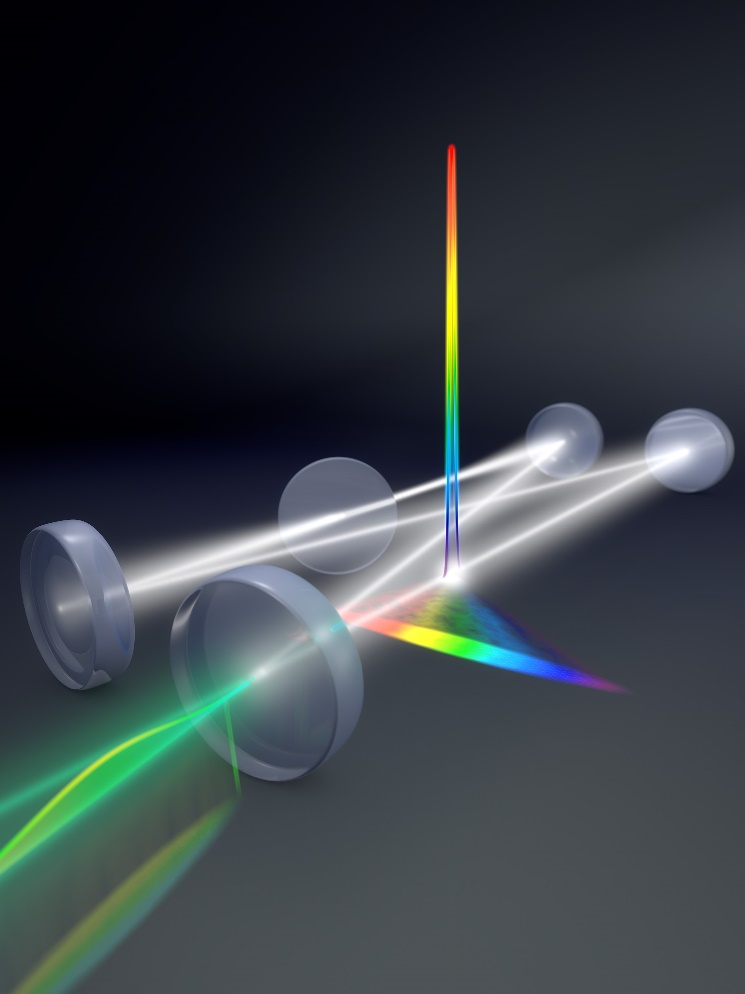
Resonantly excited free-space passive cavities can enhance the power of a train of femtosecond optical pulses by orders of magnitude. They are employed to boost the efficiency of otherwise inefficient frequency conversion processes, to increase the sensitivity of spectroscopy, or to investigate novel regimes of self-compressing, self-stabilizing soliton pulses.
Over the last years, our group has achieved records in terms of power [1] and bandwidth [2], developed a high-flux XUV beam line with unique parameters based on intracavity high-harmonic generation [3], demonstrated new ways of spatially, temporally and spectrally tailoring the intracavity light [4,5], extended their bandwidth to cover the entire molecular-fingerprint spectral region [6], and discovered a novel nonlinear regime of ultrashort pulses with 10-fold intracavity pulse duration self-compression [7].
At the Laboratory of Lightwave Metrology, we develop the next generation of femtosecond enhancement cavities, toward new parameter regimes and applications.
[1] H. Carstens, N. Lilienfein, S. Holzberger, C. Jocher, T. Eidam, J. Limpert, A. Tuennermann, J. Weitenberg, D.C. Yost, A. Alghamdi, Z. Alahmed, A. Azzeer, A. Apolonski, E. Fill, F. Krausz, I. Pupeza, “Megawatt-scale average-power ultrashort pulses in an enhancement cavity,” Optics Letters 39, 2595 (2014).
[2] N. Lilienfein, C. Hofer, S. Holzberger, C. Matzer, P. Zimmermann, M. Trubetskov, V. Pervak, I. Pupeza, “Enhancement cavities for few-cycle pulses,” Optics Letters 42, 271-274 (2017).
[3] T. Saule, S. Heinrich, J. Schötz, N. Lilienfein, M. Högner, O. de Vries, M. Plötner, J. Weitenberg, D. Esser, J. Schulte, P. Rußbüldt, J. Limpert, M. F. Kling, U. Kleineberg, I. Pupeza, “High-Flux, Ultrafast Extreme-Ultraviolet Photoemission Spectroscopy at 18.4 MHz Pulse Repetition Rate,” Nature Communications 10, 458 (2019).
[4] S. Holzberger, N. Lilienfein, H. Carstens, T. Saule, F. Luecking, M. Trubetskov, V. Pervak, T. Eidam, J. Limpert, E. Fill, F. Krausz, I. Pupeza, “Femtosecond enhancement cavities in the nonlinear regime,” Physical Review Letters 115, 023902 (2015).
[5] M. Högner, T. Saule, S. Heinrich, N. Lilienfein, D. Esser, M. Trubetskov, V. Pervak, I. Pupeza, “Cavity-enhanced noncollinear high-harmonic generation,” Optics Express 27, 19675 (2019).
[6] P. Sulzer, M. Högner, A.-K. Raab, L. Fürst, E. Fill, D. Gerz, C. Hofer, L. Voronina, I. Pupeza, “Cavity-enhanced field-resolved spectroscopy,” Nature Photonics 16, 692 (2022).
[7] N. Lilienfein, C. Hofer, T. Saule, M. Högner, M. Trubetskov, V. Pervak, E. Fill, C. Riek, A. Leitenstorfer, J. Limpert, F. Krausz, I. Pupeza, “Temporal solitons in free-space femtosecond enhancement cavities,” Nature Photonics 13, 214 (2019).
